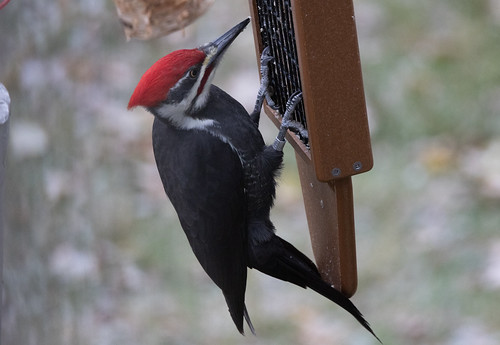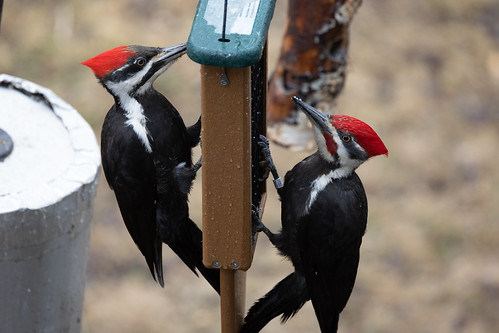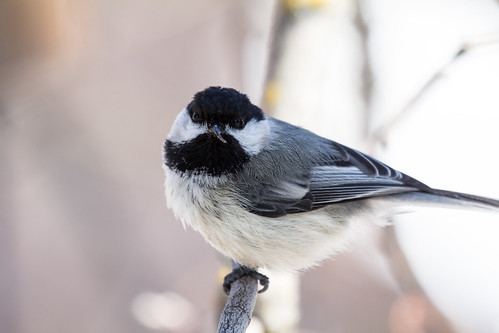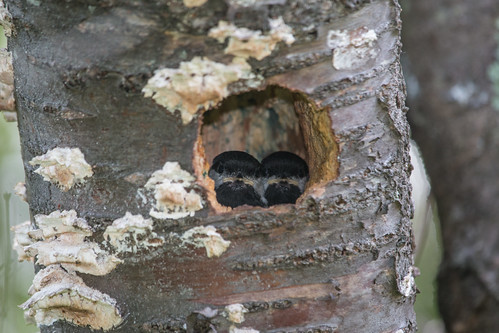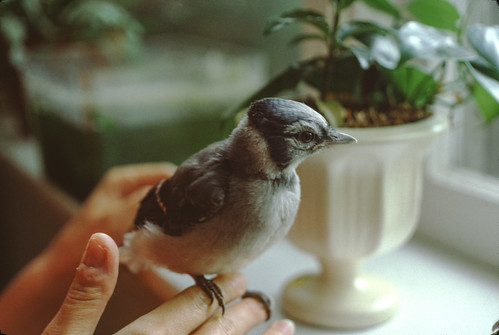Every day for most of this fall and winter, I saw at least one Pileated Woodpecker in my yard. Sometimes it was a female but more often a male. When it was a male, I’d try to see the bird’s right leg. If I got a clear view, part of the time I could see that it wore an aluminum numbered band; part of the time, that band was clearly not there.
When I did get photos of the bird with the band, at most only three numbers were visible from my angle. But day after day I took photos, and little by little worked out the entire 9-number sequence (#115423658). I was so focused on the male with the band that I couldn’t help but name him—BB for “Banded Boy.” I suspected that I had a total of three Pileateds visiting: BB, one female, and one unbanded male, but because the two were not banded and didn’t bear any other permanent identifying markings, I’ll never be sure that there weren't more. The bird I was invested in was the individual I could pick out—BB.
On April 23, I was delighted to see and photograph BB and a female in my suet feeder at the same time. He’s been visiting every few days—I took my most recent photo of him so far on May 13. I presume he’s nesting somewhere in the neighborhood, but so far, I haven’t tracked down where.
It’s thrilling to be able to recognize an individual wild Pileated Woodpecker with absolute certainty. Over the years, I’ve been able to recognize a handful of individual chickadees, some for longer periods of time than others. Early this spring one of my feeder chickadees and a chickadee at my daughter’s house were both missing all their tail feathers, presumably from close encounters with predators. I got to watch day after day as the tail feathers grew in, but now these chickadees are indistinguishable from the others, to my eyes.
One winter, I had a chickadee with a deformed, badly overgrown bill. He became a regular, feeding directly out of my hand and counting on me to provide nutritious mealworms, so I faithfully attended to him every single day. In spring, the overgrown tips of the beak eventually broke off and with proper wear and hammering, he managed to make it pretty much indistinguishable from any other chickadee's bill. But meanwhile, while the bill was still overgrown, I discovered he had a more permanent identifying feature—he was missing the three front toes on his right foot. After the bill was fixed, I could still pick him out.
A full year later, when he nested in my neighbor Jeanne’s yard, I could see him feeding young and carrying away fecal sacs. He was the father of the first two baby chickadees I ever watched fledge from the nest. I was thrilled and filled with pride, knowing I had played a part in his survival. But after that summer, I never saw him again. The probability is high that he died that fall—we live right along the hawk migration flyway. But there is also a good possibility that his mate was from a different winter flock and he moved on to her part of the neighborhood. He may well have lived one, two, or several years longer. I’ll never know for certain.
During the years I rehabbed wild birds, three of “my” birds came back the following year and were recognizable by their behavior. First was when we lived in Madison, Wisconsin, and I raised a baby Blue Jay I called Ludwig. Over the course of the summer, he grew adept at finding his own food and started associating with the neighborhood jays; he disappeared in the fall. The next year when we were in Chicago for spring break, our neighbor saw a jay pecking on our apartment’s kitchen and bedroom windows, and he alighted briefly on her lawn chair to stare at her face before flying off. That had to be Ludwig.
In Duluth, a baby Pine Siskin that my little daughter helped me care for disappeared with the siskin migration that fall. But the next spring when Katie was riding her tricycle on our front sidewalk, in flew a little siskin who alighted on her finger. It’s pretty much impossible that that could have been any other individual.
And one summer my boys helped me raise two baby flickers. When they could fly, we set them free in our yard. As they went farther and farther afield, they’d fly back and alight on or near us if they were hungry and heard us make a particular whistle. They disappeared in October, but the next spring when Joey was doing his paper route, a flicker was watching him from a tree so he made that whistle and zoom—in flew the bird, alighting right on his chest!
We never saw any of these birds again, but felt so grateful that they’d survived the winter. And we felt something deeper than gratification that they still recognized and trusted us enough to stop by and give us a final little greeting, their way of acknowledging that we'd done right by them.

